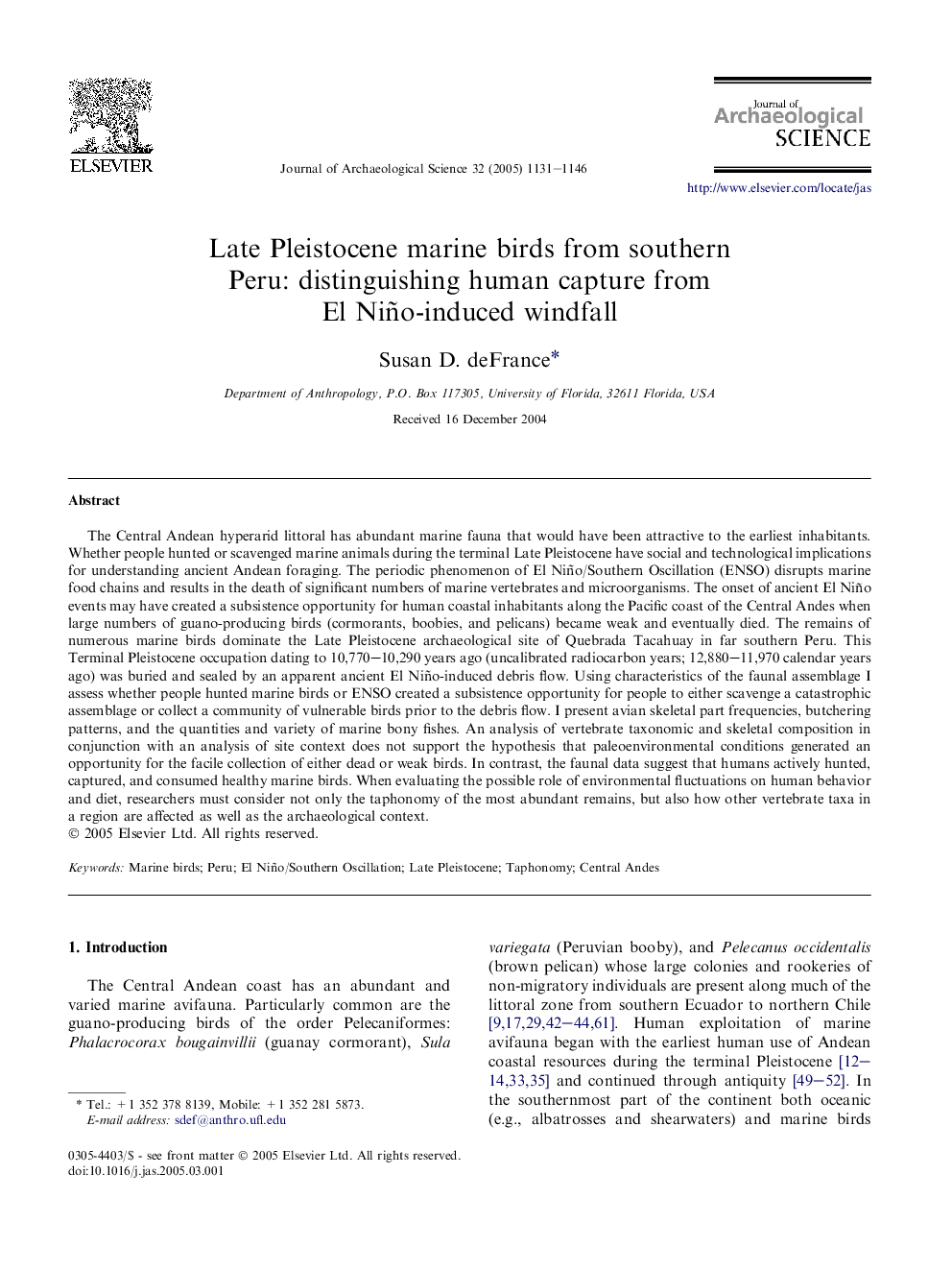| کد مقاله | کد نشریه | سال انتشار | مقاله انگلیسی | نسخه تمام متن |
|---|---|---|---|---|
| 10499240 | 943899 | 2005 | 16 صفحه PDF | دانلود رایگان |
عنوان انگلیسی مقاله ISI
Late Pleistocene marine birds from southern Peru: distinguishing human capture from El Niño-induced windfall
دانلود مقاله + سفارش ترجمه
دانلود مقاله ISI انگلیسی
رایگان برای ایرانیان
کلمات کلیدی
موضوعات مرتبط
مهندسی و علوم پایه
مهندسی مواد
دانش مواد (عمومی)
پیش نمایش صفحه اول مقاله

چکیده انگلیسی
The Central Andean hyperarid littoral has abundant marine fauna that would have been attractive to the earliest inhabitants. Whether people hunted or scavenged marine animals during the terminal Late Pleistocene have social and technological implications for understanding ancient Andean foraging. The periodic phenomenon of El Niño/Southern Oscillation (ENSO) disrupts marine food chains and results in the death of significant numbers of marine vertebrates and microorganisms. The onset of ancient El Niño events may have created a subsistence opportunity for human coastal inhabitants along the Pacific coast of the Central Andes when large numbers of guano-producing birds (cormorants, boobies, and pelicans) became weak and eventually died. The remains of numerous marine birds dominate the Late Pleistocene archaeological site of Quebrada Tacahuay in far southern Peru. This Terminal Pleistocene occupation dating to 10,770-10,290 years ago (uncalibrated radiocarbon years; 12,880-11,970 calendar years ago) was buried and sealed by an apparent ancient El Niño-induced debris flow. Using characteristics of the faunal assemblage I assess whether people hunted marine birds or ENSO created a subsistence opportunity for people to either scavenge a catastrophic assemblage or collect a community of vulnerable birds prior to the debris flow. I present avian skeletal part frequencies, butchering patterns, and the quantities and variety of marine bony fishes. An analysis of vertebrate taxonomic and skeletal composition in conjunction with an analysis of site context does not support the hypothesis that paleoenvironmental conditions generated an opportunity for the facile collection of either dead or weak birds. In contrast, the faunal data suggest that humans actively hunted, captured, and consumed healthy marine birds. When evaluating the possible role of environmental fluctuations on human behavior and diet, researchers must consider not only the taphonomy of the most abundant remains, but also how other vertebrate taxa in a region are affected as well as the archaeological context.
ناشر
Database: Elsevier - ScienceDirect (ساینس دایرکت)
Journal: Journal of Archaeological Science - Volume 32, Issue 8, August 2005, Pages 1131-1146
Journal: Journal of Archaeological Science - Volume 32, Issue 8, August 2005, Pages 1131-1146
نویسندگان
Susan D. deFrance,